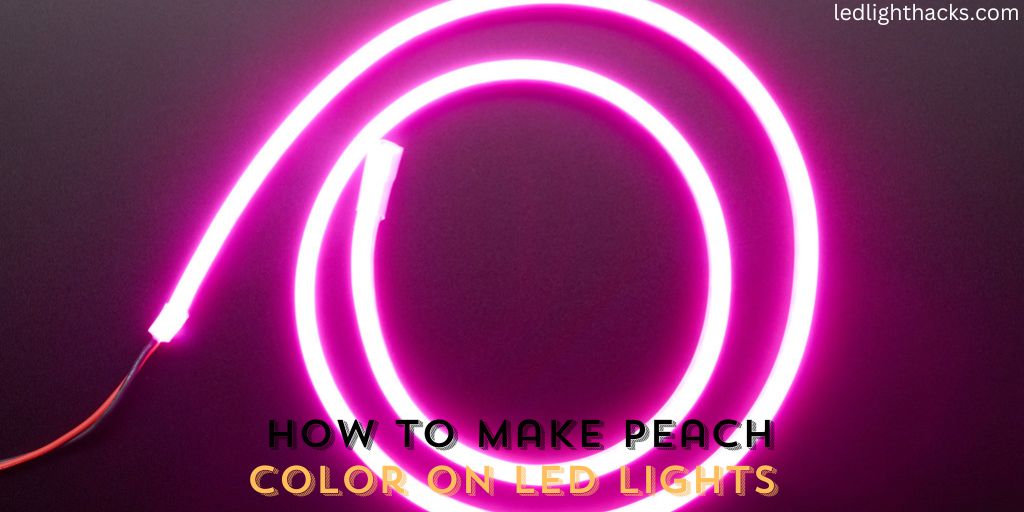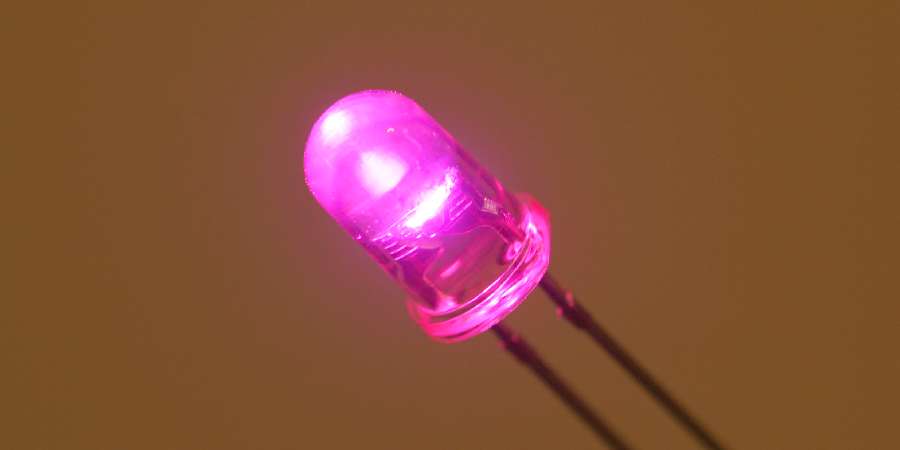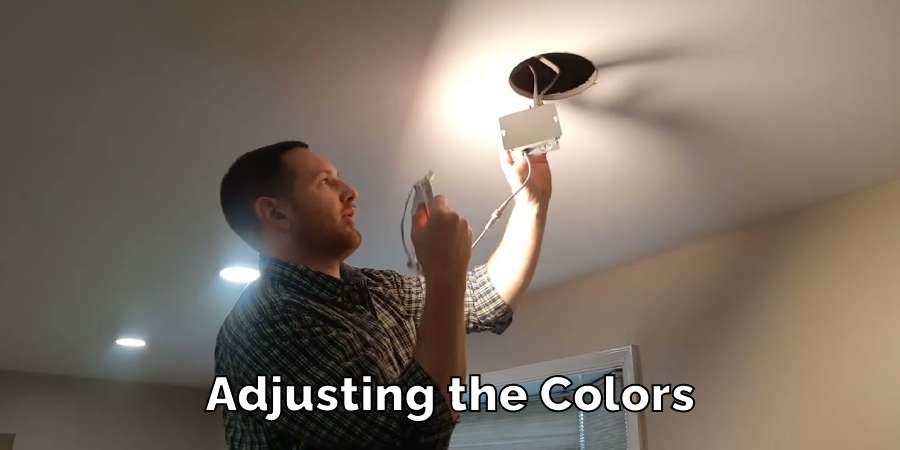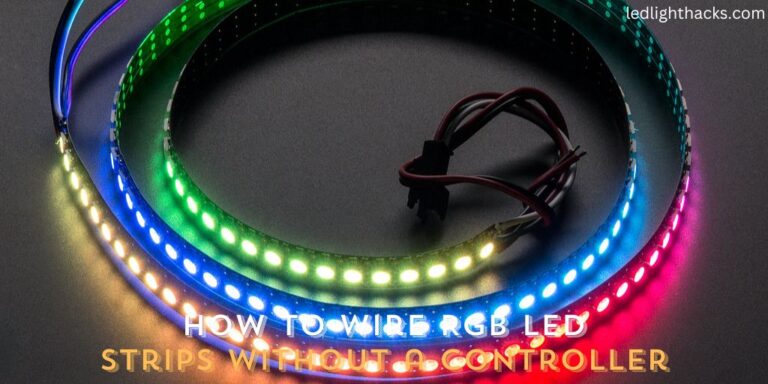How to Make Peach Color on LED Lights
Lighting plays a big role in how a room feels. Using LED lights is a popular choice because they save energy and can change to many colors. One great color choice is peach. Peach-colored lights make a space feel warm and welcoming.

This article will show you how to set up your LED lights to get a beautiful peach color. You don’t need a lot of experience with LED lights to follow these steps. We’ll make everything clear and easy to understand.
By the end of this guide, you’ll be able to use peach LED lights to make your room or event space feel cozy and inviting. We want to help you change your space with this lovely color, making it feel just right.
Why You Need to Make Peach Color on LED Lights
Peach-colored lighting is a fantastic way to improve the look and feel of any room. This soft, warm hue creates an inviting atmosphere, making it a top choice for special occasions like weddings and parties, or just for a relaxing evening at home.
Beyond just looking beautiful, peach light can also positively influence our mood. It’s known to foster feelings of comfort and joy, helping to create a peaceful and happy environment. Learning to set your LED lights to this peach color means you can personalize your space in a unique way.

It lets you tailor the ambiance to match your personal style and the vibe you want to achieve.
Whether you’re looking to add a touch of elegance to a gathering or just want to make your living space more pleasant and inviting, mastering the peach color on your LED lights is a skill that can transform any area.
This guide aims to show you how simple it is to achieve this appealing color, giving you the ability to enhance your surroundings with just a few easy steps.
Tools We Need to Make Peach Color on LED Lights
Creating the perfect peach color using LED lights is not only a fun activity but also a simple way to enhance the ambiance of any space. The process requires a few basic tools and a bit of knowledge about how colors blend together. Here’s what you’ll need to get started:
- RGB LED Lights or an RGB LED Strip: These lights consist of red, green, and blue colors that can be mixed to create various shades, including peach.
- A Controller for the LED Lights: This is usually included with your LED light set. The controller is used to adjust the colors and intensity of the lights.
- A Smartphone or Remote: If your LED lights can be controlled via an app or a remote, you’ll need one of these devices to make adjustments easily.
- Basic Understanding of Color Mixing Principles: This is about knowing how to mix the red, green, and blue lights in the right proportions to achieve the desired peach shade.
With these tools in hand, you’re all set to start the transformation. Remember, the key to success is experimenting with different color combinations until you find the one that gives you the perfect peach hue. It’s a straightforward and enjoyable process that can make a big difference in the look and feel of any room.
How to Make Peach Color on LED Lights
Getting the peach color on your LED lights is a cool project that can make any room feel cozy. Here’s a step-by-step guide to help you, even if you’re new to working with LED lights. We’ll keep it straightforward, so you can easily follow along.
1. What Are RGB LEDs?
RGB LEDs mix red, green, and blue light. By changing how much of each color you use, you can create lots of different colors, including peach. It’s similar to mixing different colors of paint.
2. Pick a Starting Color
Begin with a warm color like light red or pink. This is the base for your peach color. Think of it as laying down the first layer of paint on a canvas.

3. Mixing in Colors
Now, slowly add green and blue to your base color. Add a little bit at a time and watch how the color changes. You want to find the right mix where red, green, and blue make the perfect peach shade.

3. Adjust Brightness
You might need to change the brightness of your lights to get the peach color just right. Making the lights brighter or dimmer can help achieve the mood you’re looking for.
5. Try Different Mixes
If you don’t get the peach color right away, keep trying. Mix different amounts of red, green, and blue until you find the perfect shade for your space.
6. Use Controls
If your LED lights have a controller or an app, use it. These often have ways to adjust colors more accurately, like sliders or presets.

7. Check the Color in Various Lights
The peach color might look different in natural light, artificial light, or darkness. Look at your LED lights under different conditions, and tweak the color if needed.
8. Keep It Consistent
If you’re using more than one LED light or strip, make sure they’re all set to the same color. This way, the peach color looks uniform in your space.
9. Safety First
Be careful when handling LED lights and electronics. If you’re not sure about something, better to ask someone or look at the instructions.
With these steps, you’ll be able to create a lovely peach light that adds warmth to any room. Remember, it’s okay to try different settings to see what looks best. Have fun with it!
Precaution While Making Peach Color on LED Lights
When you’re setting up your LED lights to create a lovely peach color, it’s important to keep a few safety tips in mind:
- Protect Your Eyes: It’s not a good idea to look directly into LED lights for a long time. This can cause eye strain or discomfort. If you’re working on adjusting the colors, take breaks, and don’t stare at the lights continuously.
- Compatibility Check: Before you start mixing colors, make sure that your LED lights are compatible with the controller or smartphone app you plan to use. Using incompatible devices can lead to problems with color adjustment or even damage your lights.
- Watch the Heat: LED lights can get warm, especially if they’re on for a while. Make sure your LED lights are in a place where there’s good airflow. This helps keep them cool and reduces the risk of overheating.
- Electrical Safety: Always handle electrical devices with care. Make sure your hands are dry when you touch your LED setup, and if you’re not confident about doing something, it’s better to ask for help or look up instructions.
- Follow Manufacturer’s Instructions: It’s always a good idea to read and follow the instructions provided by the manufacturer of your LED lights. They’ll have specific guidance and tips for safe usage.
- Avoid Overloading Circuits: When installing multiple LED strips or lights, ensure that you’re not overloading your electrical circuits. Too many lights on one circuit can cause electrical issues.
- Regular Checks: Periodically check your LED lights and their connections for any signs of damage or wear. This can help prevent electrical problems and ensure your lights work well.
By keeping these precautions in mind, you can safely enjoy the process of creating the perfect peach color with your LED lights, ensuring both your safety and the longevity of your lighting setup.
FAQ’s
What Two Colors Make Light Peach?
To create a light peach shade, you start by mixing a soft red or pink color with just a small amount of yellow. The key is in how much yellow you add to the red or pink. A little more yellow will give you a brighter peach, while less yellow keeps it softer and more subtle.
It’s a bit like mixing paint – start with your main color (in this case, red or pink), and then slowly add the second color (yellow) until you get the shade you’re looking for. Experimenting with different ratios will help you find the perfect balance for your desired light peach color.
How Do You Change the Color of LED Lights?
To change the color of LED lights, you’ll typically use a controller or a smartphone app if your lights are app-enabled. These devices let you adjust the RGB (red, green, blue) values of the lights.
By changing these values, you can mix these primary colors in different amounts to create a wide range of colors, including various shades of peach.
Many controllers or apps will have sliders or buttons to increase or decrease the intensity of each color, making it easy to experiment and find the exact hue you want. It’s a straightforward process: just slide or tap until you achieve the color combination that looks best to you.
What is the Color Code for Peach?
In the world of digital colors, the RGB (Red, Green, Blue) color coding system is commonly used. For a typical peach color, the RGB code might be R: 255, G: 218, B: 185. This means that the red value is set to its maximum of 255, while green is at 218 and blue is at 185.
It’s important to note, though, that this code can vary depending on the exact shade of peach you’re aiming for. Different devices and screens might also display the same color code slightly differently.
So, while this code is a good starting point, you might need to tweak the values a bit to get the perfect peach color on your specific LED lights.
What Color is Light Peach?
Light peach is a gentle and soft color, much like the inside of a peach fruit. It’s a beautiful mix of pink and yellow shades, but it’s lighter and more muted compared to a standard peach color. Imagine a pale, warm white with just a touch of pink and yellow – that’s light peach.
It’s often described as a pastel color, which means it has a high white content, making it very light and airy. This color is great for creating a soothing and calm atmosphere.
It’s subtle yet warm, perfect for spaces where you want a touch of color without it being too bright or overpowering.
What is the Color Code for Creamy Peach?
Creamy peach is a variation of peach that has a richer, more buttery look. In the RGB color model, which is used for screens and digital devices, creamy peach is created by mixing red, green, and blue light with a slightly higher proportion of green.
This increased green value adds a creamier, softer touch to the standard peach color, making it less vibrant and more subdued. The exact RGB values can vary, but generally, the green value in creamy peach will be higher than in a standard peach color.
This gives it a lush, creamy appearance, perfect for creating a cozy and inviting ambiance in any space.
Conclusion
Crafting the perfect peach hue with LED lights is a rewarding and straightforward process. It’s an excellent way to customize the atmosphere of your room or event to reflect your personal style or to set a specific mood.
Having the right tools at hand and a basic grasp of how colors mix together opens up a world of possibilities. With these, you can turn any room into a welcoming and cozy space. The great thing about LED lighting is its versatility.
It allows for endless creative options, letting you experiment and express yourself with light. Whether you’re setting up for a special occasion or just want to add a warm glow to your daily living space, mastering the art of creating peach-colored light with LEDs is a valuable skill.
It’s not just about lighting up a space it’s about enhancing your environment in a way that’s both beautiful and practical.
How to Change a Light Switch without Turning Off the Power
Mastering the skill of changing a light switch without turning off the power holds great…
How To Stick LED Strip Lights On Wall Without Damaging Paint
LED light strips have surged in popularity, adorning homes and spaces with their vibrant colors…
Can Led Lights Get Wet
LED lights are everywhere, from homes to city streets, known for their efficiency and brightness….
Creative Ways to Use LED Strip Lights in Your Home
LED strip lights, those brilliant strips of technology, serve as a beacon of innovation in…
Can Solar Lights Catch Fire
Solar garden lights are your go-to pal for lighting up your backyard oasis while keeping…
What gauge wire for LED lights
When diving into LED lighting, one aspect that might not catch your eye at first…












